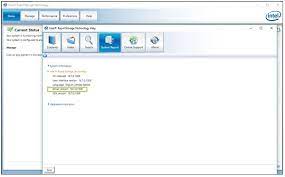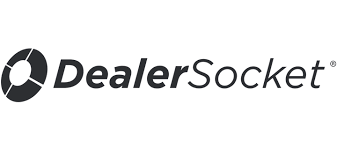
On-Page Optimization: Maximizing SEO Impact for Your Website
In the real of search engine optimization (SEO), on-page optimization stands as a crucial pillar for achieving higher search rankings and attracting organic traffic. On-page optimization involves optimizing various elements within a website to make it more search engine-friendly and user-friendly. In this article, we will explore the key components and best practices of on-page optimization that can help your website rank higher in search engine results and drive valuable traffic to your pages.
On-page optimization
On-page optimization is a fundamental component of search engine optimization (SEO) that focuses on fine-tuning and optimizing individual web pages to improve their visibility and relevance in search engine results. It involves various techniques, such as optimizing meta tags (title, description, and header tags), creating high-quality and relevant content, incorporating target keywords naturally, improving website loading speed, enhancing mobile-friendliness, and organizing the page’s structure and layout for better user experience. On-page optimization not only helps search engines understand and rank your content effectively but also enhances the overall user experience, making it a critical factor in achieving higher search rankings and attracting organic traffic to your website.
Keyword Research and Optimization
One of the foundational steps in on-page optimization is conducting thorough keyword research. Keyword research helps you identify the specific terms and phrases that users are searching for in relation to your industry, products, or services. By incorporating these keywords strategically into your website’s content, titles, headings, meta descriptions, and URLs, you can enhance its visibility to search engines and increase the chances of ranking for relevant search queries.
Best Practices:
- Utilize keyword research tools to identify high-volume and relevant keywords.
- Place primary keywords in the title tag, preferably at the beginning.
- Incorporate keywords naturally and organically throughout the content.
- Optimize headings (H1, H2, etc.) with relevant keywords to provide structure and context.
- Ensure URLs are clean, concise, and contain relevant keywords.
High-Quality and Relevant Content
Content is king when it comes to on-page optimization. Creating high-quality, informative, and engaging content is essential not only for users but also for search engines. Search engines value fresh, unique, and valuable content that provides meaningful answers to users’ queries. By producing compelling and relevant content, you can increase the likelihood of search engines ranking your pages higher and users spending more time on your website.
Best Practices:
- Conduct in-depth research to provide comprehensive and accurate information.
- Write engaging and well-structured content that addresses user intent.
- Include relevant keywords naturally throughout the content.
- Use headings, bullet points, and formatting to improve readability.
- Incorporate multimedia elements, such as images and videos, to enhance user experience.
Meta Tags Optimization
Meta tags are HTML elements that provide information about a web page to search engines and users. Two key meta tags for on-page optimization are the meta title and meta description.
a. Meta Title: The meta title appears as the clickable headline in search engine results. It should be concise, compelling, and contain the primary keyword.
Best Practices:
- Keep the meta title under 60 characters to ensure it displays fully in search results.
- Place the primary keyword close to the beginning of the title.
- Write unique meta titles for each page to avoid duplication.
B. Meta Description:
The meta description provides a brief summary of the page’s content. It should be persuasive, engaging, and encourage users to click through to your website.
Best Practices:
- Keep the meta description under 160 characters to ensure it displays fully in search results.
- Include relevant keywords naturally while maintaining readability.
- Write unique meta descriptions for each page to maximize click-through rates.
Optimized Images and Multimedia
Visual elements play a crucial role in enhancing user experience and conveying information effectively. Optimizing images and multimedia can significantly impact on-page optimization.
Best Practices:
- Compress images to reduce file size and improve page load speed.
- Use descriptive filenames and alt tags that incorporate relevant keywords.
- Optimize image dimensions to fit the page layout and responsive design.
- Provide captions or text descriptions for images to aid search engine understanding.
User-Friendly URL Structure
A well-structured URL contributes to both user experience and search engine optimization. It should be descriptive, concise, and contain relevant keywords to provide users and search engines with an understanding of the page’s content.
Best Practices:
- Use hyphens to separate words in URLs for readability.
- Keep URLs concise, avoiding unnecessary characters or parameters.
- Incorporate relevant keywords naturally into the URL.
- Create a logical folder structure that aligns with your website’s hierarchy.
On-page optimization short explanation
On-page optimization refers to the process of optimizing individual web pages to improve their search engine visibility and user experience. This involves optimizing elements such as meta tags, content, headings, images, and page structure to make the page more relevant and appealing to both search engines and website visitors. By fine-tuning on-page elements and ensuring they align with target keywords and user intent, on-page optimization helps increase a webpage’s chances of ranking higher in search results and attracting organic traffic.
Conclusion
On-page optimization plays a vital role in improving your website’s visibility, attracting organic traffic, and ranking higher in search engine results. By conducting thorough keyword research, creating high-quality content, optimizing meta tags, incorporating multimedia elements, and ensuring a user-friendly URL structure, you can maximize the impact of on-page optimization. Remember to continuously monitor and adapt your on-page optimization efforts to align with search engine algorithm updates and evolving user preferences. By implementing these best practices, you can lay a solid foundation for SEO success and drive meaningful results for your website.
Other articles related to SEO
Off-Page Optimization: Building Authority and Driving Website Success
The Importance of SEO: Unlocking the Power of Search Engine Optimization



Wow, incredible weblog structure! How lengthy have you ever
been running a blog for? you make running a blog glance
easy. The overall look of your web site is excellent, as well
as the content material! You can see similar here sklep online